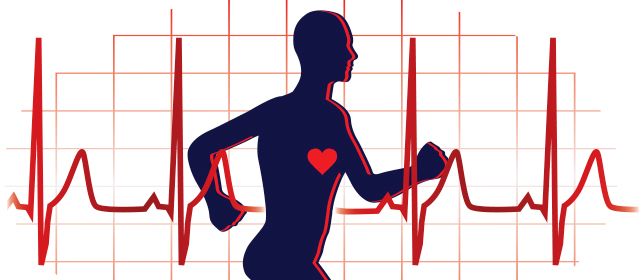
Exercise-based cardiac rehabilitation (CR) is a class 1 clinical practice recommendation for patients with select cardiovascular diseases (CVD) and heart failure with reduced ejection fraction (HFrEF). For patients with coronary heart disease and heart failure (HF), cardiorespiratory fitness is a strong predictor of mortality. Because of this, exercise prescription that optimizes improvement in cardiorespiratory fitness and exercise capacity is a critical consideration for the efficacy of CR programming.
Systematic reviews on coronary heart disease between 2004 and 2011 showed that exercise-based CR reduced hospitalizations by 31%, CV mortality by 26%, and all-cause mortality by 20%, compared with standard medical care. Since then, however, results from RAMIT (the Rehabilitation After Myocardial Infarction Trial) and subsequent systematic reviews questioned the efficacy of exercise-based CR for reducing those outcomes.
This latest review analyzed data from multiple studies to understand the effects of HIIT in CR programs, such as beneficial physiological adaptations to the pulmonary, cardiac, vascular, and skeletal muscle systems in patients with CVD and HF.
“The majority of guidelines on exercise training in CR recommend aerobic exercise prescription based on relative indices of peak exercise capacity,” the authors wrote. These capacity indexes include:
- Percentage of peak workload (Wpeak)
- Percentage of peak heart rate (%HRpeak)
- Percentage of VO2peak (%VO2peak)
- Percentage of HR reserve (%HRR)
- Percentage of VO2 reserve (%VO2R)
The review found 3 studies that analyzed long-term outcomes of HIIT compared with MICT in patients with coronary artery disease (CAD) at 6 months and 12 months.
Moholdt et al found that HIIT improved VO2peak and HR recovery more than MICT at 6 months in patients who have had a coronary artery bypass surgery. The study also found similar improvements in quality of life (QOL) and adiponectin in both HIIT and MICT.
The SAINTEX-CAD and FITR Heart studies found similar improvements between HIIT and MICT at 12 months in patients with CAD. These improvements were seen in VO2peak and other exercise variables, CVD risk factors, QOL, fibromuscular dysplasia, body composition, and moderate to vigorous physical activity. No changes were seen in dietary intake.
The improvement in VO2peak was numerically higher for HIIT (2.9 mL/kg/min) than MICT (1.8 mL/kg/min) in the FITR Heart Study, and the authors suggested this may be associated with greater long-term survival.
Two other studies in the review measured adherence. The SMARTEX HF study followed patients with HFrEF, while OptimEX-Clin followed patients with HFpEF, and both showed a regression of supervised training improvements at 12 months regardless of exercise intensity.
The FITR Heart Study and OptimEx-Clin study instructed participants to HIIT or MICT at home after the supervised training period until the 12-month follow-up, measuring adherence as >70 % of sessions at prescribed intensity. The FITR Heart Study reported a 53% adherence for HIIT and 41% for MICT, and the Optimex-Clin study measured a 56% adherence for HIIT and 60% for MICT.
However, the FITR Heart Study reported that 38% of participants prescribed MICT started exercising at a higher intensity and 24% of participants prescribed HIIT exercised at a lower intensity. After excluding nonadherent participants, HIIT showed a considerably greater improvement in VO2peak (5.2 mL/kg/min) compared with MICT (2.2 mL/kg/min).
In contrast, Moholdt et al found that, after 5 months of home-based training, a higher proportion of participants stopped HIIT in favor of MICT (35 %) and only 4% of participants prescribed MICT started higher intensity exercise. The proportion of participants performing 3 sessions/week was similar for HIIT (74 %) and MICT (68 %), with HIIT showing superior improvements in VO2peak at 6 months.
“While short-duration HIIT protocols can be a potent stimulus for improving peripheral mitochondrial adaptations and providing similar VO2 peak improvements to MICT, longer-duration and higher-volume HIIT protocols seem to be superior for eliciting stroke volume and vascular adaptations, and greater VO2peak improvements compared with MICT,” the authors said.
They also credit high intensity exercise for improvements in VO2 at submaximal exercise, which is also important for carrying out general daily activities.
Reference
Taylor JL, Bonikowske AR, Olson TP. Optimizing outcomes in cardiac rehabilitation: the importance of exercise intensity. Front Cardiovasc Med.Published online September 3, 2021. doi:10.3389/fcvm.2021.734278
from WordPress https://ift.tt/2WdmrZI
via IFTTT

No comments:
Post a Comment